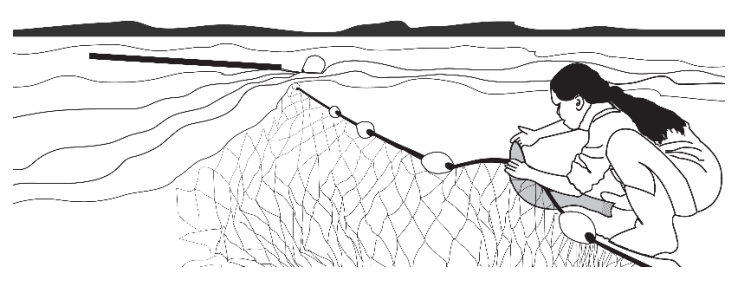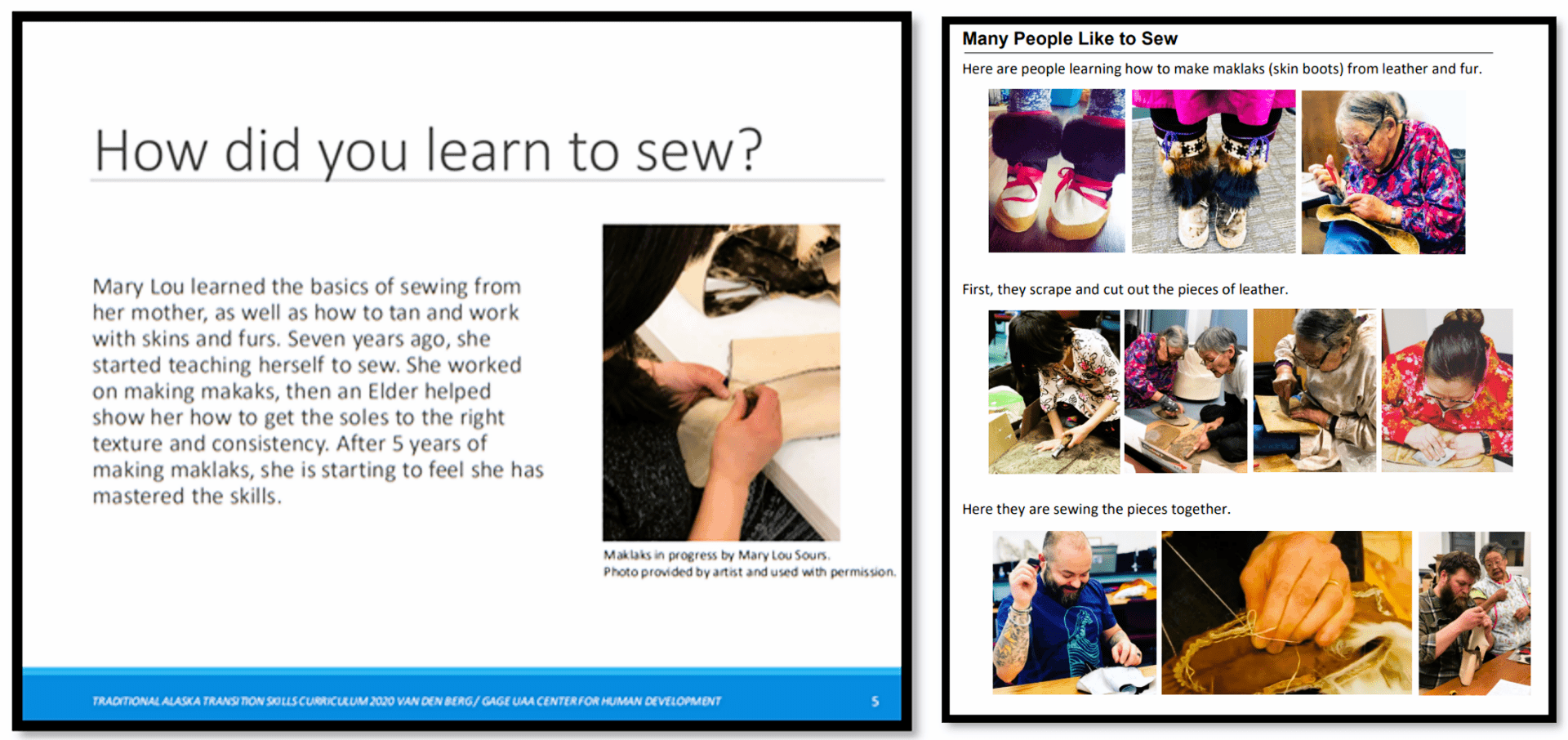
As high school students with disabilities and their families start to plan for life after their K-12 school experience, the Individualized Education Program (IEP) process requires that planning takes place to thoughtfully prepare for any needed supports and skill development to ensure that the transition to adult life is as successful as possible. Many Alaskan students and their families practice traditional Native Alaskan arts and subsistence skills, and a well-rounded transition plan should reflect those family activities alongside career and college readiness.

To support this broader view of transition planning, a group of Alaska Native educators came together to write the Alaska Traditional Skills Curriculum. It was specifically developed to improve the quality of life, connection to local community, and increase work related skills for teens and young adults with disabilities who live in rural Alaska. Importantly, it provides tools teachers can use to incorporate traditional values and knowledge into Individual Education Plans (IEPs) and Transition Plans and can be used as a guide to help teachers unfamiliar with the regions and cultures where they teach to better understand indigenous traditions and cultures, and how those skills honor the unique lifeways of Alaska Native communities.

The series of curriculums speak to traditional activities in five distinct regions around Alaska and engages students by using stories and examples that are likely familiar to them to teach life skills. Culture bearers and guest Elders are invited to guide the skills and values in many lessons. The development of curriculums was supported by the Tribal Vocational Rehabilitation (TVR) program who advised on what should be included and worked closely with curriculum developers to make sure the content was accurate.

Though each chapter of this project ties to the cultural values and topics of a specific region of Alaska, the skills can be used and adapted throughout the state. Each unit is developed in partnership with indigenous culture bearers and Elders. Each lesson includes regionally specific learning stories and suggestions for adaptation for students of different ability levels.
One of the curriculum developers, Frances Gage from the Northwest Arctic Borough School District, noted, “One of our goals with this curriculum is to help people unfamiliar with this region better understand indigenous traditions and cultures, and how those inform skills needed for the transition to adulthood. This curriculum engages students by using stories and examples that are familiar to teach real life skills. Culture bearers and guest Elders were invited to guide the skills and values in many lessons.”

These materials were created through the Developmental Disabilities Act partnership of the Governor’s Council on Disabilities & Special Education and the Center for Human Development, with funding from the Alaska Department of Education & Early Development and the Alaska Mental Health Trust Authority. Each unit is developed in partnership with indigenous culture bearers and Elders. Now housed on the Special Education Service Agency (SESA) website, each lesson includes regionally specific learning stories and suggestions for adaptation for students of different ability levels.

Teachers interested in knowing more about this resource can view the entire nine unit series at https://sesa.org/resources/educational/alaska-traditional-transition-skills/.